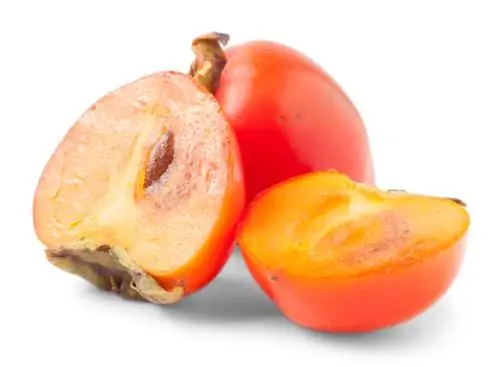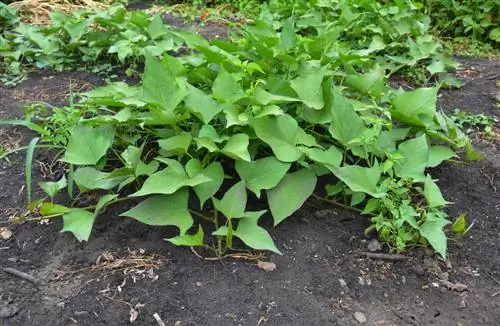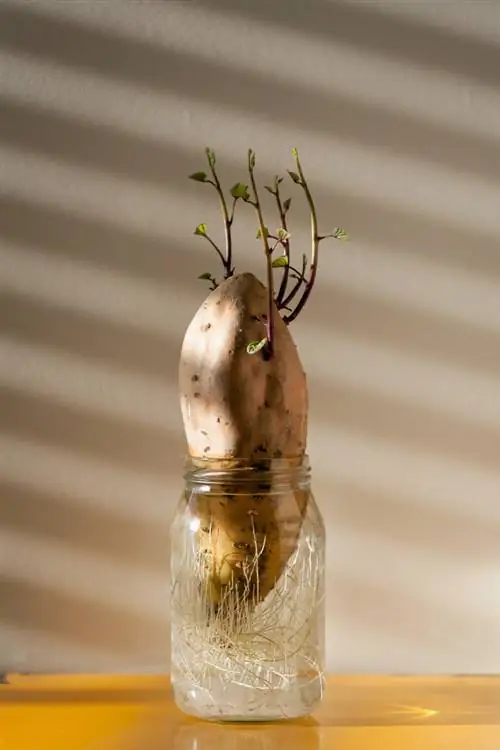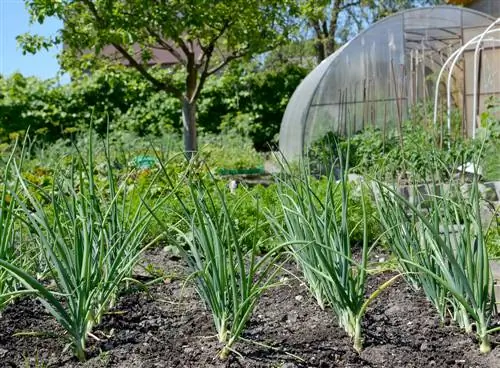- Author admin [email protected].
- Public 2023-12-25 17:45.
- Last modified 2025-01-23 11:19.
Potatoes from your own garden - planting the seed potatoes makes you look forward to the fresh tuber. Much prior knowledge is not required to plant potatoes. The necessary work can be easily completed and the harvest is eagerly awaited every year.

How can potatoes be grown successfully in the garden?
To plant potatoes in the garden, choose a sunny location with loamy or sandy soil, dig the bed deeply and add manure. Pay attention to sensible crop rotation and suitable plant neighbors such as beans, cabbage and spinach to create ideal growing conditions.
Space for the potato field
A bed in a sunny location with loamy or sandy soil is ideal for growing potatoes. All other floors are also suitable; heavy floors can be used, for example. loosen with sand. Whether you dig up the entire garden or create a smaller bed depends on how many potatoes you want to grow.
There is space for 10 seed potatoes in a 3m long row at a distance of 30cm. If you place a second row 60 cm apart, that will make 20 seed potatoes. The harvest amount is approximately ten times higher.
Preparing the bed
Once the location has been chosen, start digging deeply into the potato bed in the fall for next year. You apply manure to the coarse clods of earth and leave the whole thing there over the winter.
In the spring, chop up the clods with a cultivator (€668.00 on Amazon) and work the remaining manure under. Once you have raked everything smooth, make furrows 60 cm apart.
Compliance with crop rotation
If you want to achieve optimal yields every year by growing potatoes, you have the choice between continuous fertilization with mineral fertilizer or adhering to crop rotation.
Crop rotation, especially in four-field farming, makes optimal use of the nutrients in the soil, protects against over-fertilization and naturally maintains the productivity of the soil. To do this you need four beds on which you can grow vegetables alternately.
For growing potatoes this means:
- Potatoes are grown in the 1st year. They are heavy feeders and leach out the soil.
- Medium eaters follow in the 2nd year, e.g.: carrots, spinach and lettuce.
- In the 3rd year, the nutrients are still sufficient for weak eaters such as onions, beans and herbs.
- Fallow beds or green manure in the 4th year with vetch, clover or lupins
Changing beds as protection against diseases
Pathogens can overwinter in the soil and spread to the tubers again the next year, especially if unharvested tubers remain in the soil. This is why it is unfavorable to grow potatoes on the same bed two years in a row.
bed neighbors
When building your garden beds, you should also pay attention to a balanced mixed culture. Plants growing side by side share soil and nutrients and need space to spread roots and leaves. That's why you should grow plants around the potato that harmonize with them.
- good neighbors: beans, cabbage, kohlrabi, spinach, marigolds
- bad neighbors: tomatoes, cucumbers, zucchini, peas, celery, pumpkin
Tips & Tricks
Keeping a garden log makes it easier for you to follow crop rotation. Here you write down every year which vegetables you grew on which bed.






